When we think about snow, we see white landscapes and completely changed cities. But snowflakes build these scenes. This is what makes snowflake photography magical. We can see details that are not visible to the naked eye. It’s a great challenge for a photographer, but with our tips, you can master snowflake photography!
[ExpertPhotography is supported by readers. Product links on ExpertPhotography are referral links. If you use one of these and buy something we make a little bit of money. Need more info? See how it all works here.]
How to Shoot Snowflake Photography
Snowflake photography is macro photography. You are going to need to adjust your settings and choose your gear accordingly. There is not only one way to shoot snow crystals but to increase magnification.
What Equipment Do You Need
To photograph snowflakes, you are going to need a gear what is capable of capturing images higher than 1:1 magnification. The 1:1 ratio means that your subject appears the same size on the camera sensor as it is in real life. This allows you to take breathtaking photos of really small subjects. There are point and shoot and bridge cameras what can be used for macro photography. They can have a great magnification ratio and macro functions. Some smartphones have a macro mode too, but they are usually not enough for capturing snowflakes. If you choose a DSLR or a mirrorless camera, you have a few options to shoot macro. Macro lenses usually produce images with 1:1 magnification, which is not always enough for capturing snowflakes. If you add a set of the above-mentioned tools, you can even get a 2:1 ratio which allows you to take stunning images.
What Settings Do You Need for Snowflake Photos?
I strongly recommend using the manual mode of your camera if it has one. It gives full control over your exposure. There is not only one setting what surely fits every situation. You’ll have to experiment with the settings and adjust them to each other.
Why Shoot in RAW
Shooting in RAW is essential here as it allows to preserve more details. You’ll have more freedom during post-processing. You can crop your images or adjust the white balance freely without losing details and image quality.
How to Set Your Aperture
As snowflakes are extremely small, you’ll need a shallow depth of field to separate them from the background. Set your aperture somewhere between f/5.6 and f/11. You shouldn’t necessarily use the biggest aperture of your lens. You want to have the whole subject in focus and a too-wide aperture can blur a part of it.
How to Set Your ISO
In macro photography, try to keep your ISO as low as possible. This way you can avoid noise and grain which would result in quality loss. Start with the smallest ISO value like ISO 100 or 200. As snowflakes are not moving as an ant would, you can keep your ISO low and choose a bit longer shutter speed instead. A lot depends on the lighting conditions so you should always check what your images look like. Then adjust the ISO if you see that they are too dark.
How to Set Your Shutter Speed
The shutter speed depends on the available light, the aperture and the ISO. Start with a small value to avoid blur in your snowflake photographs. You should set it to 1/100 or faster. A tripod can help you if you have to operate with a slower shutter. It also eliminates camera shake.
Why Use Manual Focus for Snowflake Photography
Macro photographers usually work with manual focus as it’s hard for the cameras to focus on such tiny subjects. Also, macro filters can interfere with the autofocus and they make focusing even harder. So stick with manual focus and place the focus wherever you wish. You can – and should – also move the camera to find the perfect point. Try making most parts of the crystal appear sharp.
Why You Should Try Focus Stacking
When you want a shallow depth of field with your whole snowflake sharply in focus, you can try focus stacking. This technique combines several pictures of the same subject but with different parts of it in focus. You will need a tripod to be able to shoot all the images from the exact same angle. It can be hard as snowflakes tend to melt fast but if the circumstances are right, you can experiment with it. As always, Photoshop is going to be a great help for photographers in this process.
How You Should Set the Lighting
Of course, as you photograph snowflakes outside, you can operate with natural light. In sunny weather sometimes you don’t need anything else but the ambient light you already have. But if you feel that the light is not enough or you want to vary it, you can use a flash-ring. Ring flashes light all parts of the snowflake evenly and make it sparkly and clear. Also, you won’t shadow the snowflake if the ring sits on the front of the camera lens.
How to Choose the Background
Choosing your locations is not too hard, as the most important part is to have snow there. Your background can be anything where snow falls. Dark backgrounds are the best because they make a nice contrast with snowflakes and they become more visible. Photographers use their gloves, scarves or their coats to capture the ice crystals fallen on them. Make sure to choose something that is not warm. You obviously can’t take photos of snowflakes if they melt immediately into water droplets. You can photograph a snowflake through a window (if it sits on the glass). This way you can have different scenes as a background. When the ground is not covered completely in snow yet, it can also serve as a dark background. A snow-covered part can still be great if the crystal in focus stands out a little bit.
What Else You Should Consider for Photographing Snowflakes
As snowflakes melt fast or they freeze together, it’s the best to shoot them during snowfall. They are the most beautiful when they are freshly fallen and the snow crystals are unharmed. You shouldn’t only prepare for the technical aspects of snowflake images. You are going to work outside at a low temperature. Wear proper clothes and keep yourself warm. There isn’t any snowflake image that would worth getting a cold. Also, you should keep in mind that in low temperature, your batteries will run out faster. So don’t only keep one with you. When you lean close to the snowflake to photograph it, your body heat and breath can melt it. So pay attention to how you breathe and try not to blow or melt the snowflakes.
Conclusion
Snowflake photographs are beautiful pieces of art. As a photographer, you have the ability to capture magical images so why wouldn’t you try it? Every snowflake is different which makes every image of them different. But our tips can be used by every photographer. There is not just one way you can take snowflake photos. You’ll have to be patient and experiment with the settings and the gear you use. A ring flash, professional cameras or different tools, like extension tubes and a magnifying glass, can definitely help you. But it’s worth trying without professional equipment too!
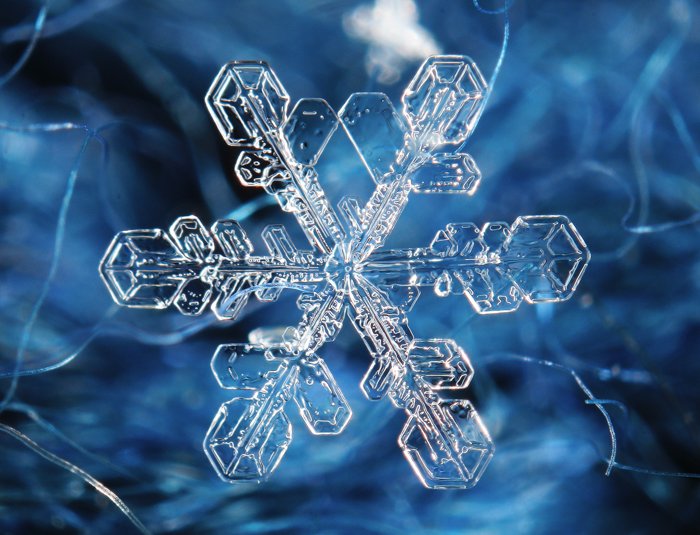

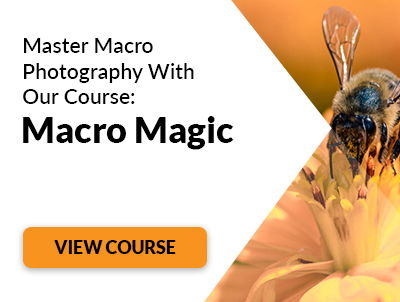
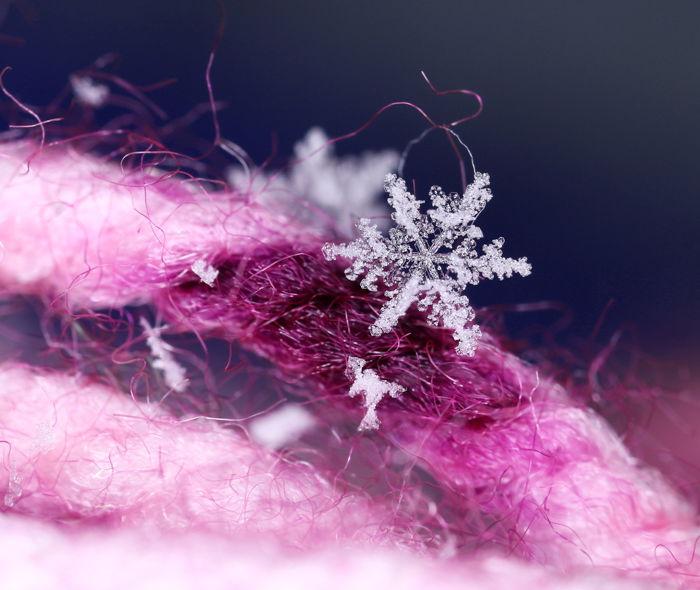
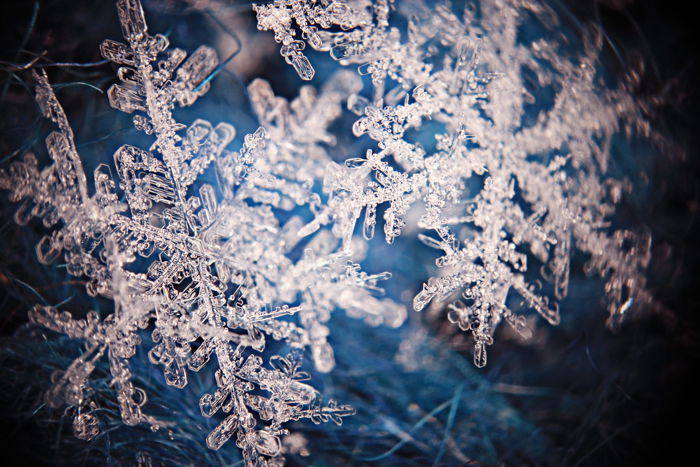
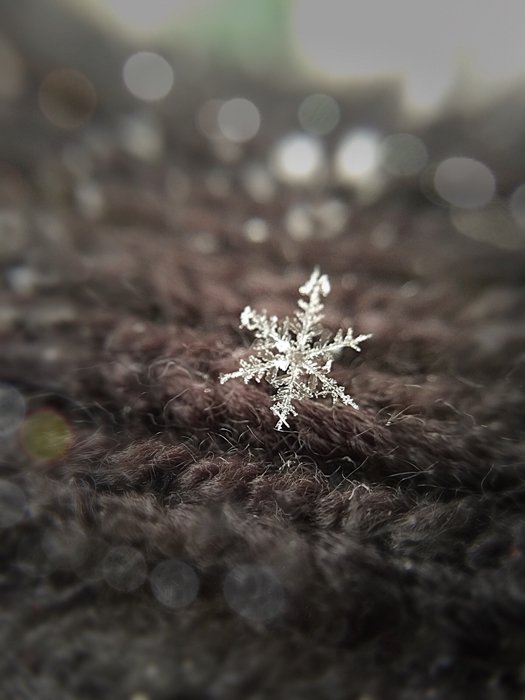
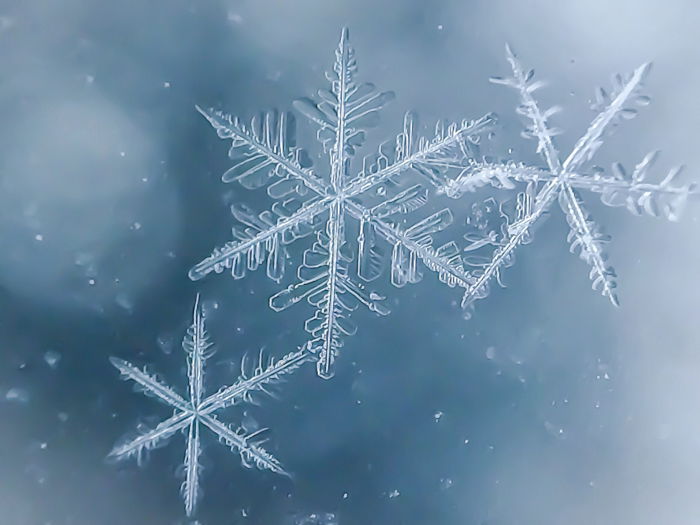
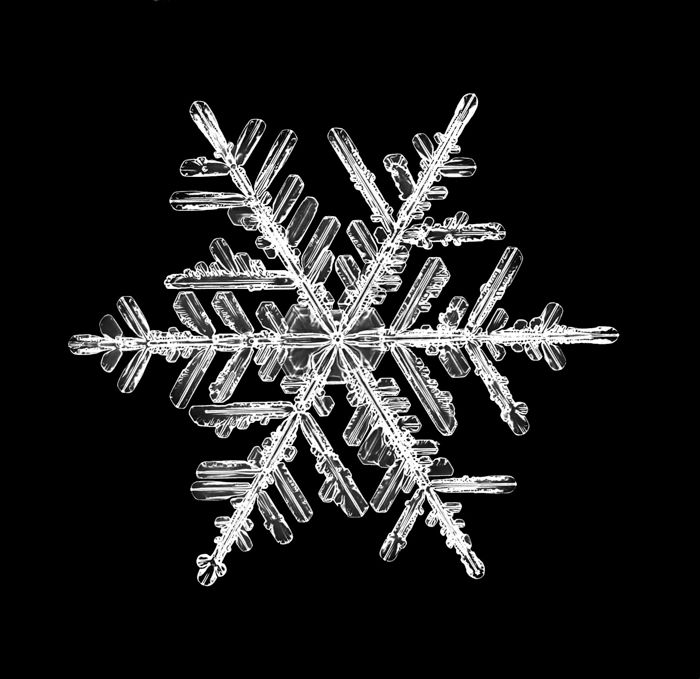
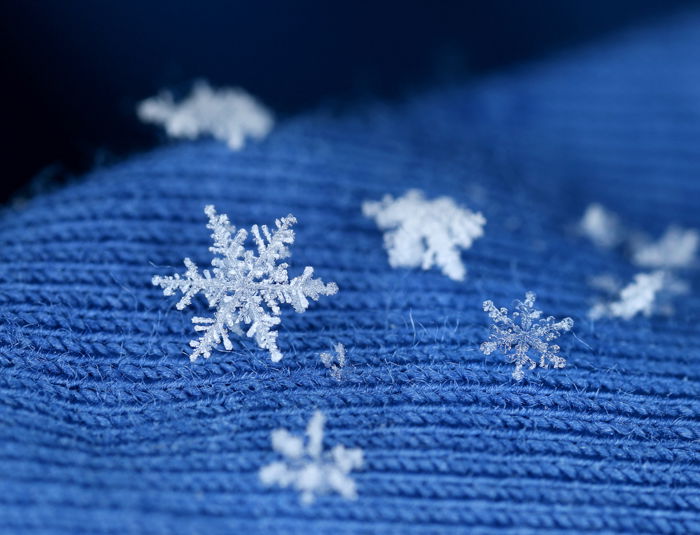
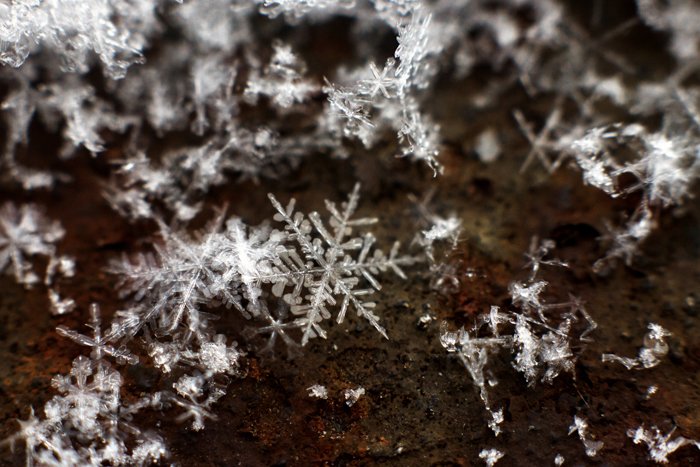
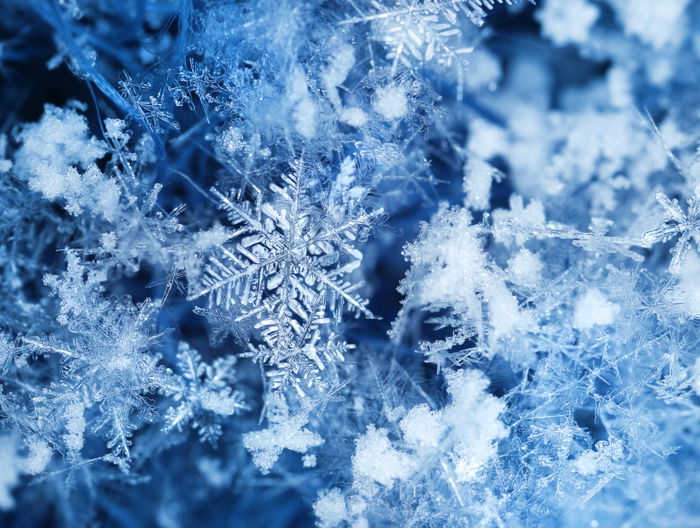
title: “How To Shoot Snowflake Photography Stunning Macro Snowflakes " ShowToc: true date: “2023-01-23” author: “Mike Banks”
When we think about snow, we see white landscapes and completely changed cities. But snowflakes build these scenes. This is what makes snowflake photography magical. We can see details that are not visible to the naked eye. It’s a great challenge for a photographer, but with our tips, you can master snowflake photography!
[ExpertPhotography is supported by readers. Product links on ExpertPhotography are referral links. If you use one of these and buy something we make a little bit of money. Need more info? See how it all works here.]
How to Shoot Snowflake Photography
Snowflake photography is macro photography. You are going to need to adjust your settings and choose your gear accordingly. There is not only one way to shoot snow crystals but to increase magnification.
What Equipment Do You Need
To photograph snowflakes, you are going to need a gear what is capable of capturing images higher than 1:1 magnification. The 1:1 ratio means that your subject appears the same size on the camera sensor as it is in real life. This allows you to take breathtaking photos of really small subjects. There are point and shoot and bridge cameras what can be used for macro photography. They can have a great magnification ratio and macro functions. Some smartphones have a macro mode too, but they are usually not enough for capturing snowflakes. If you choose a DSLR or a mirrorless camera, you have a few options to shoot macro. Macro lenses usually produce images with 1:1 magnification, which is not always enough for capturing snowflakes. If you add a set of the above-mentioned tools, you can even get a 2:1 ratio which allows you to take stunning images.
What Settings Do You Need for Snowflake Photos?
I strongly recommend using the manual mode of your camera if it has one. It gives full control over your exposure. There is not only one setting what surely fits every situation. You’ll have to experiment with the settings and adjust them to each other.
Why Shoot in RAW
Shooting in RAW is essential here as it allows to preserve more details. You’ll have more freedom during post-processing. You can crop your images or adjust the white balance freely without losing details and image quality.
How to Set Your Aperture
As snowflakes are extremely small, you’ll need a shallow depth of field to separate them from the background. Set your aperture somewhere between f/5.6 and f/11. You shouldn’t necessarily use the biggest aperture of your lens. You want to have the whole subject in focus and a too-wide aperture can blur a part of it.
How to Set Your ISO
In macro photography, try to keep your ISO as low as possible. This way you can avoid noise and grain which would result in quality loss. Start with the smallest ISO value like ISO 100 or 200. As snowflakes are not moving as an ant would, you can keep your ISO low and choose a bit longer shutter speed instead. A lot depends on the lighting conditions so you should always check what your images look like. Then adjust the ISO if you see that they are too dark.
How to Set Your Shutter Speed
The shutter speed depends on the available light, the aperture and the ISO. Start with a small value to avoid blur in your snowflake photographs. You should set it to 1/100 or faster. A tripod can help you if you have to operate with a slower shutter. It also eliminates camera shake.
Why Use Manual Focus for Snowflake Photography
Macro photographers usually work with manual focus as it’s hard for the cameras to focus on such tiny subjects. Also, macro filters can interfere with the autofocus and they make focusing even harder. So stick with manual focus and place the focus wherever you wish. You can – and should – also move the camera to find the perfect point. Try making most parts of the crystal appear sharp.
Why You Should Try Focus Stacking
When you want a shallow depth of field with your whole snowflake sharply in focus, you can try focus stacking. This technique combines several pictures of the same subject but with different parts of it in focus. You will need a tripod to be able to shoot all the images from the exact same angle. It can be hard as snowflakes tend to melt fast but if the circumstances are right, you can experiment with it. As always, Photoshop is going to be a great help for photographers in this process.
How You Should Set the Lighting
Of course, as you photograph snowflakes outside, you can operate with natural light. In sunny weather sometimes you don’t need anything else but the ambient light you already have. But if you feel that the light is not enough or you want to vary it, you can use a flash-ring. Ring flashes light all parts of the snowflake evenly and make it sparkly and clear. Also, you won’t shadow the snowflake if the ring sits on the front of the camera lens.
How to Choose the Background
Choosing your locations is not too hard, as the most important part is to have snow there. Your background can be anything where snow falls. Dark backgrounds are the best because they make a nice contrast with snowflakes and they become more visible. Photographers use their gloves, scarves or their coats to capture the ice crystals fallen on them. Make sure to choose something that is not warm. You obviously can’t take photos of snowflakes if they melt immediately into water droplets. You can photograph a snowflake through a window (if it sits on the glass). This way you can have different scenes as a background. When the ground is not covered completely in snow yet, it can also serve as a dark background. A snow-covered part can still be great if the crystal in focus stands out a little bit.
What Else You Should Consider for Photographing Snowflakes
As snowflakes melt fast or they freeze together, it’s the best to shoot them during snowfall. They are the most beautiful when they are freshly fallen and the snow crystals are unharmed. You shouldn’t only prepare for the technical aspects of snowflake images. You are going to work outside at a low temperature. Wear proper clothes and keep yourself warm. There isn’t any snowflake image that would worth getting a cold. Also, you should keep in mind that in low temperature, your batteries will run out faster. So don’t only keep one with you. When you lean close to the snowflake to photograph it, your body heat and breath can melt it. So pay attention to how you breathe and try not to blow or melt the snowflakes.
Conclusion
Snowflake photographs are beautiful pieces of art. As a photographer, you have the ability to capture magical images so why wouldn’t you try it? Every snowflake is different which makes every image of them different. But our tips can be used by every photographer. There is not just one way you can take snowflake photos. You’ll have to be patient and experiment with the settings and the gear you use. A ring flash, professional cameras or different tools, like extension tubes and a magnifying glass, can definitely help you. But it’s worth trying without professional equipment too!










